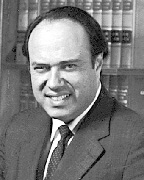I can tell that the housing market is improving when clients start to ask about homeowner associations.
While more common in other parts of the country, homeowner associations do exist here. In my experience, owners of single family homes may be members of a homeowner association that owns certain common amenities - the roads, or the clubhouse, for example.
The homeowner association could be a trust with the homeowners being beneficiaries of the trust. The homeowners pay fees to the trust that maintains the roads and any other common amenities.
Sometimes there are multiple two unit condominiums with a homeowner association. Multiple two unit condominiums are two or more condominiums each containing two condominium units. Sometimes there are single family homes as well as duplex condominiums with a homeowner association.
Homeowners associations are common interest communities not formed under the Mass. Condominium Statute, Chapter 183A of the Mass. General Laws. Often, for a subdivision of homes, there is a need for a homeowners association in order to enforce a common scheme of restrictions and to provide for the maintenance of roads and other common property.
This is accomplished by the creation and recording of an umbrella organization, usually a trust, with each homeowner being a beneficiary of the trust. The developer is the sole trustee until all of the homes are sold. When all of the homes are sold, usually three or more of the homeowners become the trustees. The trust enforces a Declaration of Covenants, Conditions and Restrictions (DCC and R). The DCC and R is recorded before the first house is conveyed. All of the homeowners are bound by the DCC and R.
The trust is not governed by Chapter 183A. This can create problems, if, for example, there is a need to incorporate the lien enforcement and lien priority provisions of Chapter 183A into the documents. It is, in my opinion, possible to incorporate the priority provisions without statutory authority. As long as this is done, the trust and DCC and R will work to impose a common scheme on the homes in the subdivision. As there is no statute governing a homeowners association, there is broad freedom in the provisions of the trust and the DCC and R. It can place restrictions on the size and appearance of the homes and other restrictions which can benefit the homeowners.
Finally, I want to address the issue of multiple condominiums which share "community" property. A homeowner association is the proper way to own and manage the community property. The community property is most often the road or roads into the development. It also includes amenities such as the club house, swimming pool, and tennis courts.
There is a right way and a wrong way to create multiple condominiums with a homeowner association. The right way is to create the homeowner association first and then build the multiple condominiums. The wrong way is to develop the condominiums first and then join them by the homeowner association.
I have seen the disastrous effect to a developer of the latter approach. The developer retained ownership of the entrance roads during the course of building and selling units in four separate condominium communities. He then wanted to set up the homeowner association. He had to deal with the four separate associations of unit owners, their lenders, unit owners and numerous lawyers.
The developer somehow thought there was an advantage to keeping control until the end of the development. In fact, it was the worst way to plan a development.
It is beyond the scope of this article to address the fact that some decisions of condominium trustees and unit owners can not be delegated to a homeowner association.
I should note also that the community amenities could be located in one of the condominiums with cross-easements to the other condominiums. This is a problem unless the amenities are all located on the first condominium. Unit owners will wonder whether the swimming pool, club house, and other amenities will in fact ever be constructed. Therefore, I prefer the scenario of multiple condominiums linked by a homeowner association which is created at the very beginning of the development and owns the amenities.
Saul Feldman is a real estate attorney with Feldman & Feldman, P.C., Boston.
Tags:
Homeowner associations: What is it and when should a developer create the association?
October 25, 2012 - Spotlights









